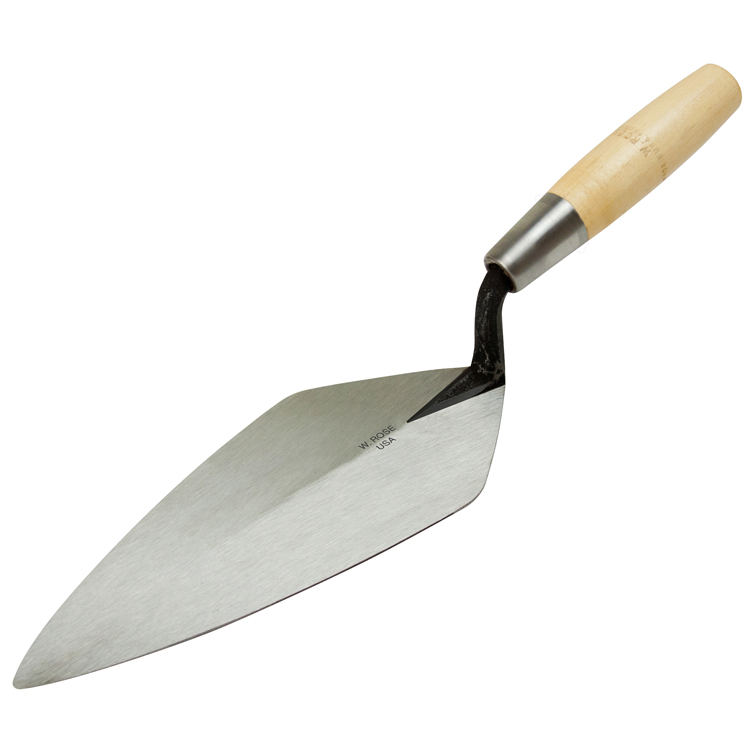
FREE SHIPPING ON
ALL QUALIFYING ORDERS
Enter your email below to join our mailing list:

Masonry is one of the oldest crafts in human history. Masons have been using trowels for thousands of years to apply and shape mortar and other materials. The trowel has undergone several design changes throughout history, with various cultures and regions developing their own unique versions.
The earliest trowels were made of stone, dating back to the ancient Egyptians and Mesopotamians. These trowels were primarily used for plastering walls and floors, as well as laying bricks and stone.
During the Roman Empire, the trowel evolved into a more complex tool with a pointed blade on one end and a curved blade on the other. This design allowed masons to apply mortar to tight spaces and around corners, making it easier to create intricate designs and patterns.
In the Middle Ages, the trowel took on a more simplistic form, with a flat rectangular blade attached to a wooden handle. This design remained popular throughout the Renaissance period, with masons often decorating their trowels with intricate designs and inscriptions.
In the 18th century, the trowel underwent a significant change with the invention of tempered steel. This allowed for a stronger, more durable blade that could withstand heavy use without becoming damaged. The handle also became more ergonomic, allowing for a better grip and increased control over the tool.
In the 19th century, the trowel continued to evolve, with new materials and manufacturing techniques allowing for greater precision and efficiency. The introduction of lightweight alloys and plastics, as well as the use of automated machinery, made trowels more affordable and accessible to a wider range of people.
Today, trowels come in a variety of shapes, sizes, and materials, each designed to meet specific needs and preferences. Some masons prefer traditional wooden-handled trowels, while others opt for modern leather, plastic or rubber handles for better grip and comfort.
Overall, the history of the masonry trowel design is a testament to the ingenuity and creativity of human beings. From the earliest stone trowels to the modern, high-tech versions of today, the trowel has remained an essential tool for masons and craftsmen throughout history. As the craft of masonry continues to evolve and adapt, it’s likely that the trowel will continue to play an important role in the construction and creation of structures and buildings for many years to come.





No spam, notifications only about products and updates.

Having dealt with MK Diamond Products and the Delahauts since the mid 1990’s it is sad to hear the news that they have closed their

I’ve told my wife and daughter to never follow a mortar mixer down the interstate. For over 30 years we have sold, rented, and repaired

This question is one of the most frequent mixer related questions our rental staff are asked. Our contractor customers know the importance of using the right tools for the job.

Trowel Trades, a company that specializes in equipment rental, tool retail, repair services, scaffolding and mast climber access solutions, enters the Silver Tier of the Masonry Alliance Program.
Your email was submitted successfully.
YOUR 10% OFF COUPON CODE IS WELCOME10.
See category exclusions below.
Category Exclusions:
Arbortech Brick and Mortar Saw, Compaction, Concrete Mixers, Concrete Walk Behind Saws, Drop Hammers, Grout Hogs, iQ Power Tools, Masonry Block Saws, Masonry Brick Saws, Mast Climbers, Mortar Mixers, Mud Buggy, Saws, Scaffold, Self Dumping Hoppers, Shoring, and Stihl